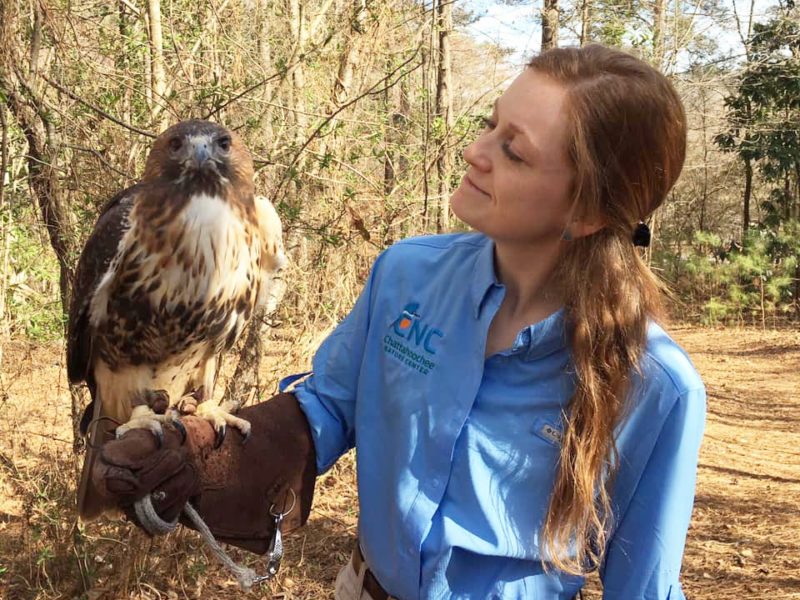Creating Community between animals and humans
Creating Community Between Animals and Humans
By Jana Pearce, CNC Visitor Experience Manager
All too often we hear about another species that is facing habitat loss and heading for trouble. News reels and online articles bombard us with image after image of downed forests and desolate construction sites. For so many of us, learning and interfacing with animals makes us feel closer to nature, and seeing their homes destroyed can provoke an intensely emotional response. We see those photos and think to ourselves: how awful, poor animals, and what a shame.
But what happens when those animals become “too successful” at adapting to the cities that replace their natural habitat? For some animals, while in nature they had to roam tirelessly to satisfy their basic needs, in a city they can find food, water, and shelter all in one convenient place. It just might happen to be your backyard. Are we willing to share our space? We are delighted to see does with their fawns until they start snacking on our vegetable gardens. What do you do when you have a neighbor that you can’t seem to get along with?
A basic piece of advice is to “treat the problem, not the symptom.” The critter is around because something in the area is meeting its basic needs. Take away or block off the food, water, or shelter they’re after and chances are they’ll move on to greener pastures. It might sound too good to be true, but sometimes bringing in the cat food at night or putting an exclusion fence around the garden is all it takes.
Another approach is to start with a shift in mindset. Humans generally consider our society and the natural world as two separate communities. Now more than ever, as urbanization continues to spread, “humans must view cities as part of—not separate from—nature,” said Suzanne MacDonald, psychologist and biologist at York University in Toronto. How can we learn to live alongside our wild friends?
CNC’s own wildlife tech Samantha Kennett recently began working with Clemson University and UGA on the “Urban King Snake Project,” to identify and track the king snake population in the metro Atlanta area. This snake (which eats Copperheads, by the way) has proven itself adept at surviving in urban environs. How and why does it thrive? If we found out, they could help control the vermin populations in urban areas.
Just like the snake, hawks and owls love small animals, but they often fall victim to the reflective windows of office buildings, hitting them and dying. CNC partnered with the Atlanta Audubon Society to implement a series of special stickers in the Discovery Center that have caused the rate of bird collisions at CNC to dramatically fall. Other businesses in Atlanta has adopted the new system, called Collidescape.
We will all have to do some adapting of our own and challenge ourselves to learn to embrace our non-human neighbors.
If you find you’re in need of more information, search the web for the Georgia Wildlife Resources Division’s “Living With Wildlife” page and UGA Extension’s “Resolving Human-Nuisance Wildlife Conflicts” page for facts, advice, and more.

